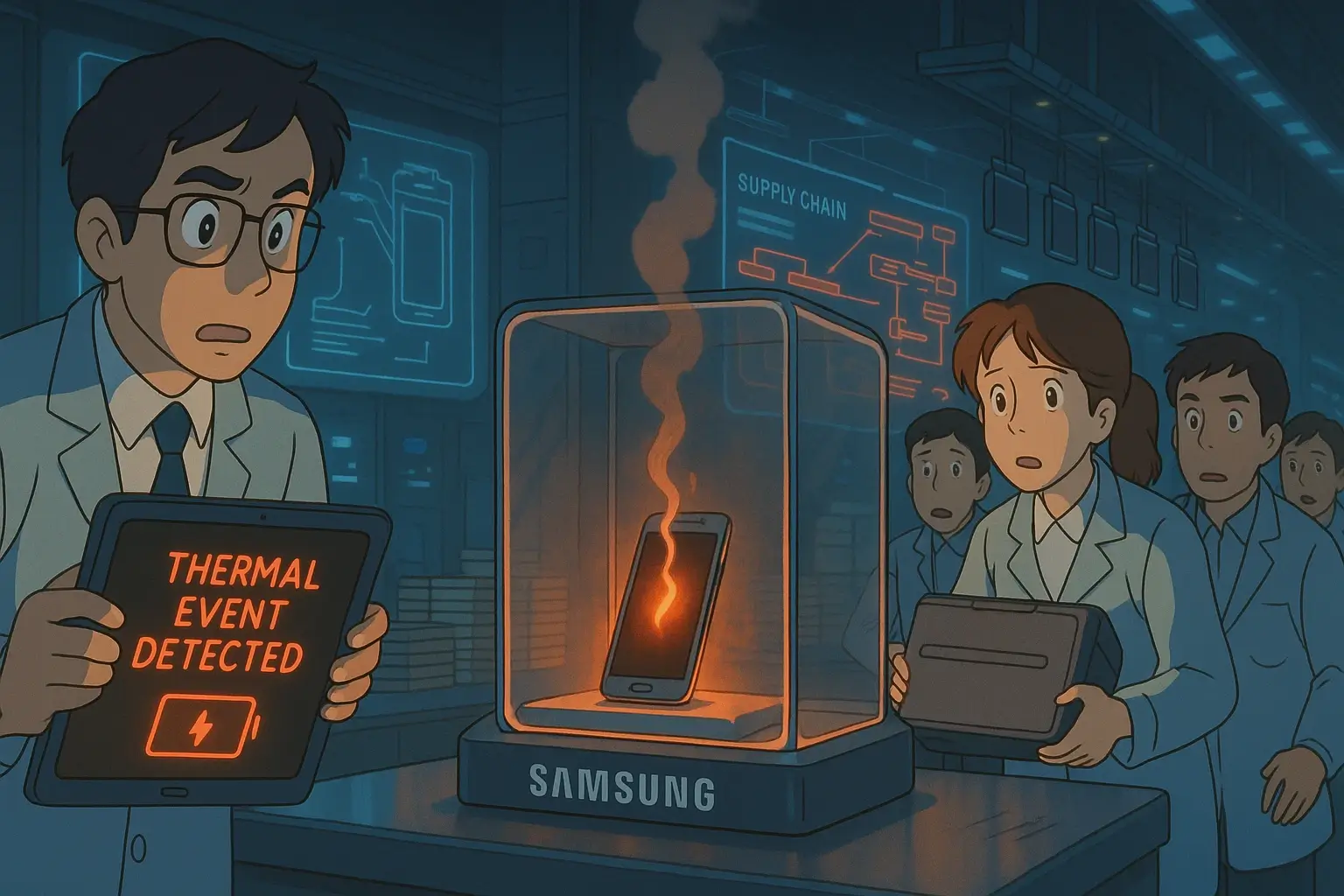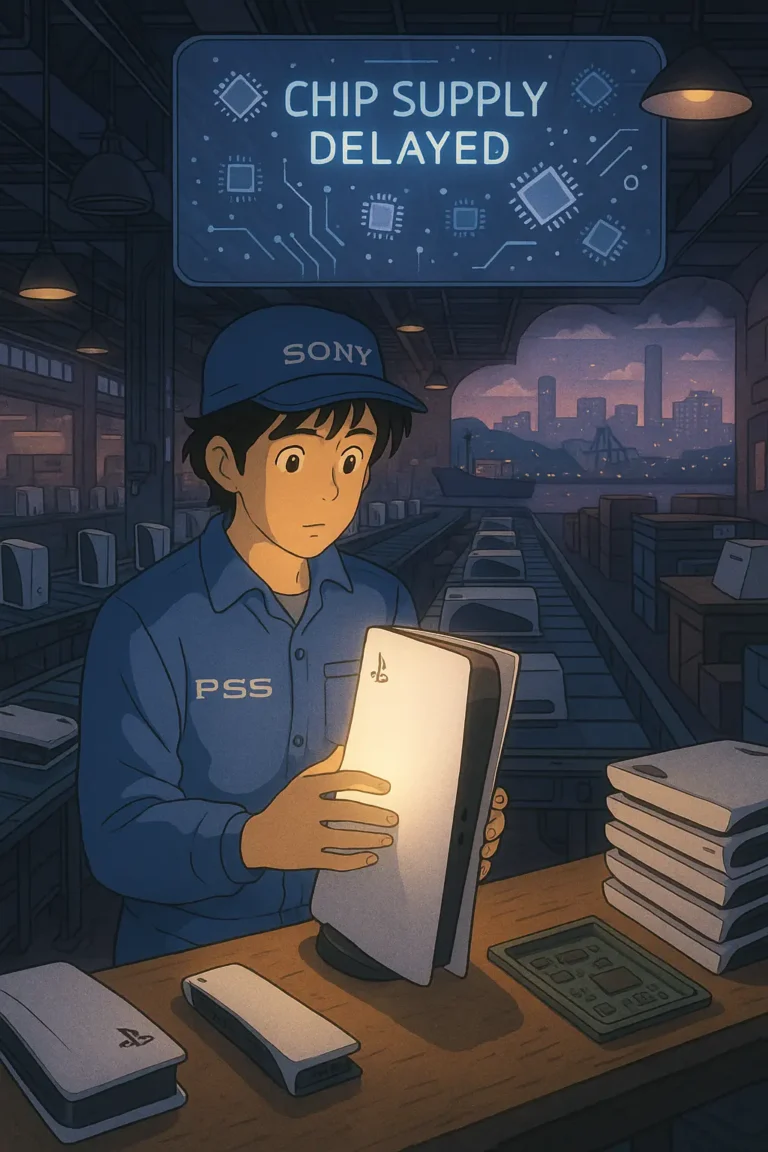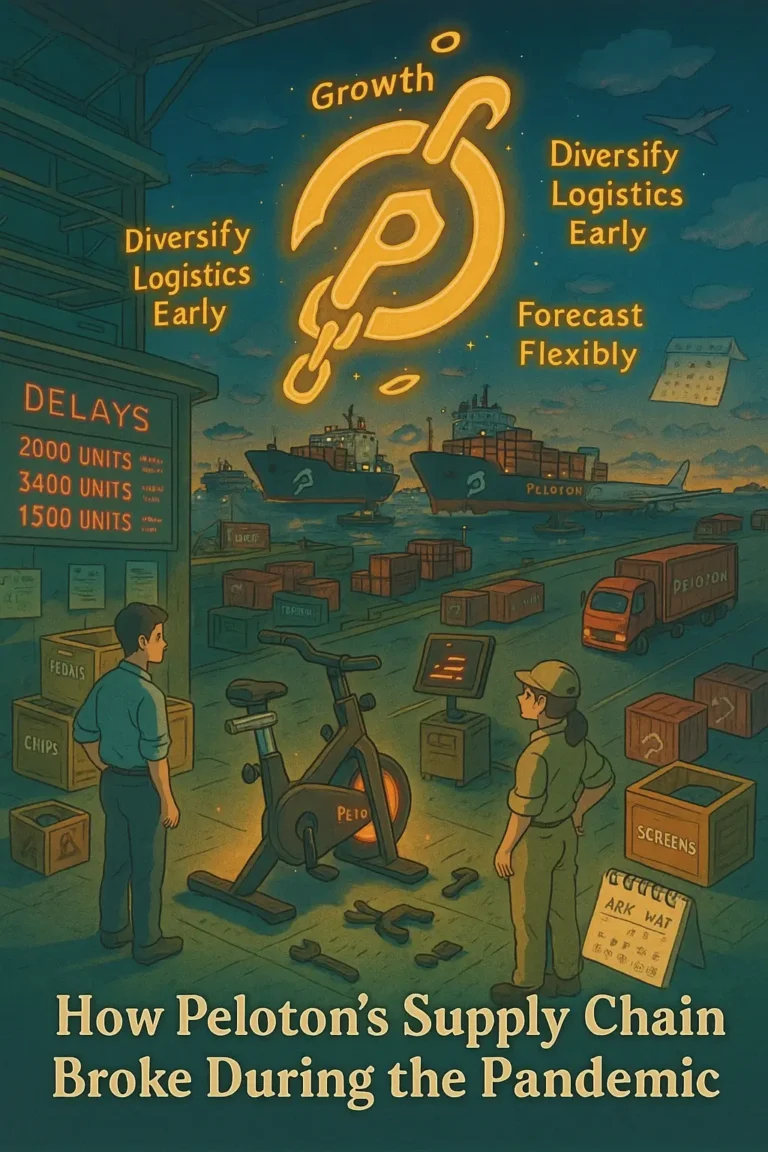
Samsung's Poor Quality Control Led to the Galaxy Note7 Fiasco
There’s no shortcut around safety. And Samsung’s poor quality control following the launch of one of its flagship phones reminded the entire world that no one is exempt from this rule.
In August 2016, Samsung released the Galaxy Note 7 — a sleek, high-performance phone designed to eclipse the iPhone 7. However, within weeks, the phone was catching fire in cars, homes, and passengers’ pockets.
A product meant to be a market leader became a case study in failed quality control.
Key Nuggets:
- Samsung’s rush to beat competitors exposed critical gaps in supply chain oversight and quality checks.
- Two different battery suppliers made different mistakes — but both pointed back to Samsung’s aggressive design and timeline.
- The Note7 crisis compelled Samsung to reassess its approach to battery safety, engineering tolerance, and supplier oversight.
- African manufacturers can avoid similar failures by incorporating margins into product design, verifying supplier capabilities, and prioritizing safety over speed.
The Galaxy Note7 Failure Was Built into the Supply Chain
Samsung’s poor quality control wasn’t a fluke.
The company desperately wanted to beat Apple’s iPhone 7 release so it could gain a competitive edge in the market. But that urgency compressed testing windows, rushed approval steps, and piled pressure on battery suppliers.
In this race, Samsung designed a high-capacity battery into a phone that was just 7.9 mm thick.
There was almost no margin for natural swelling. And as Samsung’s own design engineers later admitted, they had “designed out all of the margin in the thickness of the battery”.
This meant that even slight swelling or compression, which is normal for a charging battery, risked deforming the cell. In short, Samsung pushed manufacturing and design parameters to the limit in pursuit of battery life, without sufficient margin for error.
That decision placed enormous stress on manufacturing tolerances. Even tiny errors could and did trigger battery fires.
Read More: How Chip Shortage Crippled Sony’s PS5 Supply Chain.
Double Suppliers, Double Failures
To meet demand, Samsung relied on two battery makers:
- Samsung SDI (an in-house affiliate)
- Amperex Technology Limited (ATL)
But here is the twist — both suppliers delivered faulty batteries, but for completely different reasons:
- Samsung SDI’s cells had misaligned electrodes. The corner of the battery was crushed when installed, causing internal shorts.
- ATL’s cells had poor welds and missing insulation tape, which allowed layers to contact and ignite during normal use.
You would expect that sourcing from two vendors would spread risk.
But in this case, both vendors were working from Samsung’s high-risk design and tight specifications. The issue wasn’t just the supplier. It was what they were tasked with building.
If both independently produced faulty cells, the common factor is the buyer.
Samsung’s poor quality control and unrealistic demands had put the company in trouble.
Read More: The Story Behind Apple’s Manufacturing Shift Away From China.
The Global Impact: Fires, Recalls, and Airline Bans
By September 2, 2016, Samsung had recalled 2.5 million Note 7 units globally. But the damage was already done.
Sales turned into scrap.
The phone launched in 10 countries, including South Korea, the U.S., and China. After fires broke out in every major market, Samsung stopped sales and began offering replacements.
However, the replacement phones also began to burn.
In early October, Samsung ended production entirely. The Note 7 was also banned from airplanes worldwide.
Then the financial losses stacked up.
On Wall Street, Samsung took it on the chin. The company wrote off $2.3 billion in Q3 2016 revenue and warned of a $5–$ 10 billion hit from the Note 7 fallout.
Its smartphone market share dropped. Competitors like Apple and Google filled the gap.
Consumer trust also collapsed.
Even though only a small fraction of phones actually caught fire, the images and headlines stuck. For example, a Note 7 fire prompted the evacuation of a Southwest Airlines flight.
In the U.S. alone, nearly 100 cases of overheating were documented. And Samsung had to do more than fix the phones. The company had to rebuild its reputation.
Do you want more supply chain stories like this? Subscribe here
Samsung’s Poor Quality Control Turnaround
Samsung’s response to the entire fiasco was a top-down rebuild of its quality and safety controls.
1. 8-Point Battery Safety Check
Samsung introduced a new testing protocol, which included:
- X-ray scans of internal cell structure
- Physical battery tear-downs
- Pressure and thermal shock tests
- TVOC leak detection
Before this, most of the company’s batteries were only tested by the supplier. Now, Samsung inspects batteries in-house and in detail at every stage of the production process.
2. Greater Oversight at Supplier Sites
Samsung has increased the rigor of in-house tests and raised the “safety bar” for all components. Moreover, the company’s engineers are now physically present at battery plants during welding and insulation steps.
Instead of just trusting the vendor’s test results like before, the company’s engineers get to witness them firsthand and make necessary adjustments as needed.
3. Emphasis on Prevention, Not Detection
Before the Galaxy Note 7 crisis, Samsung relied on detecting flaws after production had begun. Now, the company starts with the design. The new approach ensures that a battery has space to swell, that insulation is thick enough, and that tolerances are practical.
However, it is not just about catching errors. It’s about designing the gadgets in a way that reduces the chance of failure from the start.
Read More: The Volkswagen Supplier Dispute That Disrupted Its Supply Chain in 2016.
Lessons from Samsung’s Poor Quality Control and Galaxy Note7 Crisis
This story is about what happens when companies rush quality, slip on oversight, and neglect to build risk into the design. There are key lessons to be learned from the crisis and Samsung’s response.
1. Risk Multiplies When Deadlines Drive Decisions
Rushing to market, especially with a tight production deadline and a complex supply chain, increases the likelihood of defects, missed checks, and accidents. In Samsung’s case, trying to beat Apple’s launch added pressure that translated into mistakes at every level.
Align launch plans with realistic production and validation windows.
2. Supplier Diversity Doesn’t Equal Safety
Using two vendors should reduce risk. However, when both vendors follow the same narrow design, it is not difficult for one mistake to be duplicated. If you’re sourcing and pushing the same design across suppliers, you’re still exposed to single-point failure.
3. Testing Must be Multi-level and Frequent
Samsung’s new 8-point check includes x-rays, stress tests, and even lab dissection of batteries. All of which did not exist before. Building in redundant tests is no longer an option if you want products that do not burn — especially for high-risk components.
4. Design Margins Aren’t Optional
The Note 7 design left almost no space for the battery to flex. That turned a small manufacturing misalignment into a fire hazard. Every supply chain should fight to retain a mechanical and safety margin. No part should be pushed to its physical limit just to hit a desired product specification.
5. Communication Matters in Crisis
Samsung’s eventual transparency helped recover trust. But early missteps, such as sending out flawed replacements, created deeper skepticism. Supply chain teams need clear crisis protocols, rapid response options, and full transparency with regulators and users.
Do you want more supply chain stories like this? Subscribe here
How African Supply Chains Can Apply These Lessons
African manufacturers face different conditions than Samsung. But the guardrails against disaster are the same.
1. Don’t Sacrifice Safety for Speed
Rushing to meet tenders, grants, or demand spikes can pressure suppliers to cut corners. African businesses and supply chains must allow sufficient time for proper validation — especially for electrical or structural components.
2. Train Local Teams to Verify Independently
Don’t just rely on supplier test reports. Train the quality staff to inspect welds, verify packaging, and identify over-compression or swelling — even in basic products.
3. Use Second-Source Designs, Not Just Second Vendors
Diversity only works if it’s functional. If, like in Samsung’s case, two suppliers build the same risky design, you’ve only doubled exposure. Consider allowing variation in production methods, not just vendors.
Even small manufacturers can run pressure, heat, or vibration checks on components. Creating low-cost versions of Samsung’s 8-point process (like manual inspections and thermal trials) is better than trusting that “the supplier got it right.”

Obinabo Tochukwu Tabansi is a supply chain digital writer (Content writer & Ghostwriter) helping professionals and business owners across Africa learn from real-world supply chain wins and setbacks and apply proven strategies to their own operations. He also crafts social content for logistics and supply chain companies, turning their solutions and insights into engaging posts that drive visibility and trust.







